-
When were skateboards invented
Skateboards, as we know them today, were first developed in the late 1940s and early 1950s. The exact origin of the skateboard is a bit complex and involves the convergence of different influences and innovations.
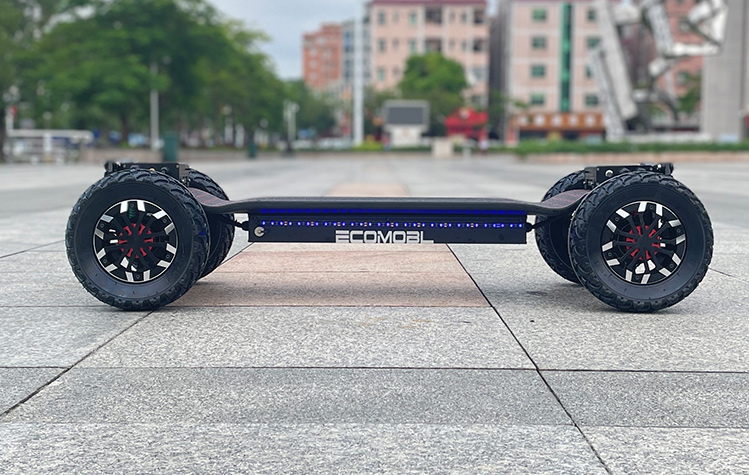
-
- 1940s: The first crude skateboards appeared in the late 1940s. These early versions were essentially homemade scooters made by attaching roller-skate wheels to a wooden plank or crate.
- 1950s: In the early 1950s, surfing became increasingly popular in California. Surfers sought ways to replicate the feeling of riding waves on land. This led to the development of what were called “sidewalk surfers” or “skateboards.” These early skateboards often featured roller-skate wheels attached to a wooden board, much like the earlier homemade versions.
- 1960s: Skateboarding gained more popularity throughout the 1960s. Innovations such as clay wheels, improved trucks (axles), and kicktails (upturned ends of the skateboard deck) were introduced, which allowed for more maneuverability and better performance.
- 1970s: The 1970s saw a significant boom in skateboarding culture. Skate parks began to emerge, providing dedicated spaces for skateboarders to practice and perform tricks. Skateboard competitions and events also became more common.
- 1980s and Beyond: Skateboarding continued to evolve, with advancements in skateboard technology, styles of riding, and the development of various skateboarding disciplines such as street skating, vert skating, and freestyle skating. Skateboarding also gained recognition as a legitimate sport and form of artistic expression.
Overall, the invention and evolution of the skateboard were influenced by various factors including surfing culture, innovations in materials and technology, and the creativity and ingenuity of individuals seeking new ways to enjoy recreational activities.
-
How to build an electric skateboard
Building an electric skateboard involves several steps and requires some technical knowledge and skills. Here’s a general overview of the process:
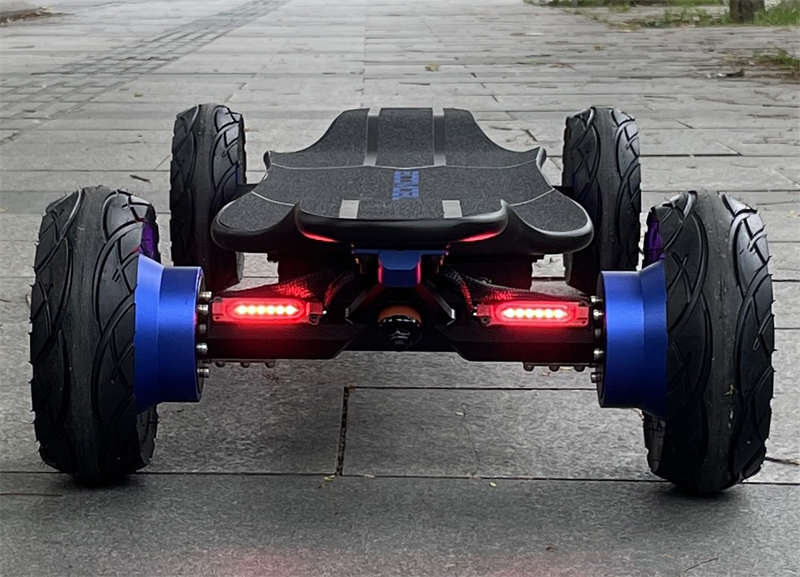
- Gather Components:
- Deck: Choose a skateboard deck that suits your riding style and preferences.
- Trucks: Select trucks that are compatible with your deck and provide stability and maneuverability.
- Wheels: Choose wheels that match your riding preferences and the terrain you’ll be riding on.
- Motor: Select a brushless electric motor suitable for skateboards, along with a motor mount to attach it to the trucks.
- Battery: Choose a lithium-ion battery pack with sufficient capacity and voltage for your desired range and speed.
- ESC (Electronic Speed Controller): Select an ESC that is compatible with your motor and battery, providing smooth acceleration and braking.
- Remote Control: Choose a wireless remote control that allows you to control the speed and braking of your electric skateboard.
- Enclosure: You may need an enclosure to protect the electronic components from damage and moisture.
- Assemble Mechanical Components:
- Mount the trucks onto the skateboard deck using appropriate hardware.
- Attach the motor mount to the trucks and secure it in place.
- Install the wheels onto the trucks and ensure they rotate freely without interference.
- Install Electronics:
- Mount the motor onto the motor mount and connect it to the ESC.
- Connect the ESC to the battery, motor, and remote control receiver according to the manufacturer’s instructions.
- Install the battery onto the skateboard deck, securing it in place with straps or mounts.
- Place the ESC and receiver in a suitable location on the skateboard deck and secure them in place.
- Test and Calibrate:
- Before riding, thoroughly test all components to ensure they are functioning correctly.
- Calibrate the ESC according to the manufacturer’s instructions to ensure smooth acceleration and braking.
- Test the remote control to ensure it properly communicates with the ESC and controls the speed and braking of the electric skateboard.
- Safety Precautions:
- Inspect all connections and components regularly for signs of wear or damage.
- Wear appropriate safety gear, including a helmet, knee pads, elbow pads, and wrist guards, when riding your electric skateboard.
- Follow local laws and regulations regarding the use of electric skateboards, including where and how they can be ridden.
Building an electric skateboard requires careful planning, attention to detail, and knowledge of electrical and mechanical systems. If you’re not confident in your abilities to build one yourself, consider purchasing a pre-built electric skateboard from a reputable manufacturer instead.
-
How much are electric skateboards
The cost of electric skateboards can vary widely depending on factors such as brand, quality, features, and specifications. Here’s a general overview of the price ranges you might expect to encounter:

- Entry-Level Electric SkateboardsEntry-level electric skateboards typically cost between $200 to $500 USD. These may have basic features, smaller motors, shorter range, and may be suitable for beginners or casual riders.
- Mid-Range Electric Skateboards:Mid-range electric skateboards typically range from $500 to $1000 USD. These boards often offer a balance between performance and affordability, with better build quality, longer range, and more features compared to entry-level options.
- High-End Electric Skateboards:
- High-end electric skateboards can cost $1000 USD or more. These boards often feature premium components, advanced technology, longer battery life, higher speeds, and specialized designs tailored for enthusiasts or professional riders.
- Custom or Specialty Electric Skateboards:
- Custom or specialty electric skateboards can exceed $2000 USD or even more. These may include custom-built boards, limited edition models, or high-performance boards designed for specific purposes such as off-road riding or extreme sports.
It’s important to consider your budget, riding needs, and preferences when choosing an electric skateboard. While more expensive boards may offer superior performance and features, there are also affordable options available that provide good value for beginners or casual riders. Additionally, factor in any additional costs such as safety gear, accessories, or maintenance when budgeting for your electric skateboard purchase.
-
How long do Electric Skateboard last
The lifespan of an electric skateboard can vary depending on several factors including the quality of construction, usage patterns, maintenance, and environmental conditions. Here are some considerations regarding the lifespan of electric skateboards:
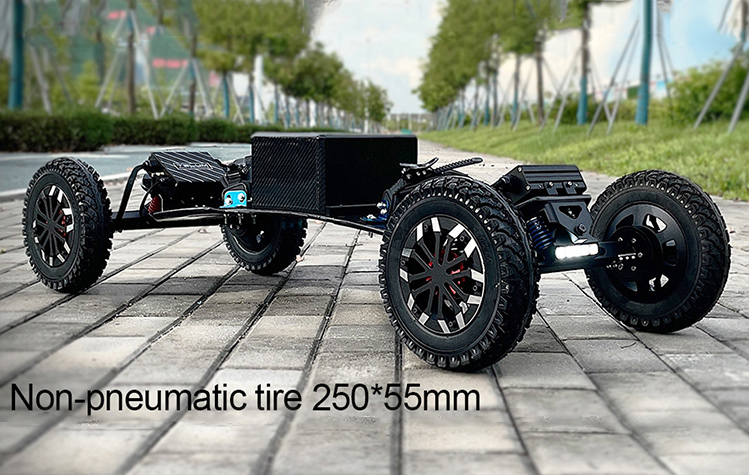
- Quality of Components: Higher-quality electric skateboards typically feature better construction materials and components, which can contribute to a longer lifespan. Boards with durable decks, reliable motors, and high-quality batteries are likely to last longer than cheaper, lower-quality alternatives.
- Frequency of Use: The more frequently you ride your electric skateboard, the faster it may wear out. Continuous use can put stress on various components such as the motor, battery, wheels, and bearings, potentially leading to wear and tear over time.
- Maintenance: Proper maintenance can extend the lifespan of your electric skateboard. Regularly cleaning and inspecting components, tightening hardware, lubricating bearings, and ensuring proper storage can help prevent premature wear and damage.
- Usage Conditions: Riding conditions and environmental factors can also affect the lifespan of an electric skateboard. Riding on smooth, clean surfaces will cause less wear and tear compared to rough terrain or wet conditions. Exposure to moisture, extreme temperatures, or UV radiation can also degrade materials and components over time.
- Manufacturer Reputation: Electric skateboards from reputable manufacturers with a track record of quality and reliability are more likely to have a longer lifespan compared to lesser-known brands or cheap knockoffs.
- Warranty Coverage: Many electric skateboard manufacturers offer warranty coverage for their products, which can provide protection against defects and premature failures. Check the warranty terms and conditions to understand what is covered and for how long.
On average, a well-maintained electric skateboard can last anywhere from a few years to several years. However, individual experiences may vary, and there is no set expiration date for an electric skateboard. Regular maintenance, responsible usage, and proper storage can help maximize the lifespan of your electric skateboard and ensure years of enjoyable riding.
-
How to go faster on electric skateboard
To go faster on an electric skateboard, you can follow these tips and techniques:
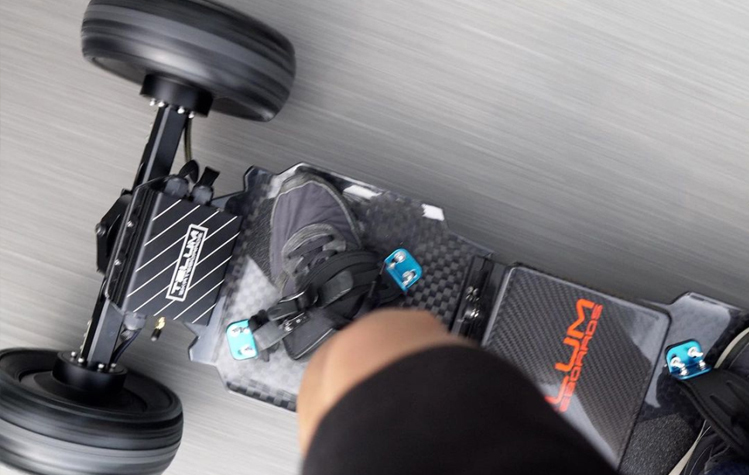
- Increase Speed Settings:
- Most electric skateboards come with multiple speed modes or settings. Check your skateboard’s user manual to see if it has different speed settings. You can usually adjust these settings through the remote control. Increase the speed setting to access higher top speeds.
- Lean Forward:
- Shift your weight slightly forward while riding to maximize acceleration. This can help engage the motor more effectively and increase your speed. Be careful not to lean too far forward, as it may affect your balance and control.
- Use a Lower Riding Stance:
- Lowering your center of gravity by crouching or bending your knees can improve stability and control at higher speeds. This position also reduces wind resistance, allowing you to go faster with less drag.
- Upgrade Components:
- Consider upgrading certain components of your electric skateboard to improve performance. Upgrading to a more powerful motor, higher-capacity battery, or performance wheels can increase your skateboard’s speed capabilities. However, be sure to check compatibility with your skateboard’s existing components before making any upgrades.
- Optimize Terrain:
- Choose smooth, flat terrain for maximum speed. Rough or uneven surfaces can slow you down and reduce efficiency. Avoid steep inclines or hills unless your electric skateboard is specifically designed for climbing.
- Practice Riding Technique:
- Practice controlling your speed and maintaining stability at higher speeds. Gradually increase your speed as you become more comfortable and confident with your riding abilities. Practice braking smoothly and safely to maintain control at faster speeds.
- Check Tire Pressure:
- Proper tire pressure can affect your skateboard’s performance. Check the tire pressure regularly and adjust it according to the manufacturer’s recommendations. Higher tire pressure can reduce rolling resistance and improve efficiency, potentially allowing you to achieve higher speeds.
- Stay Aerodynamic:
- Minimize wind resistance by tucking your body slightly and keeping your arms close to your sides while riding. This aerodynamic position can help you achieve higher speeds with less effort.
- Safety First:
- Always prioritize safety when riding at higher speeds. Wear appropriate safety gear, including a helmet, knee pads, elbow pads, and wrist guards, to protect yourself in case of falls or accidents.
Remember to ride responsibly and within your skill level when attempting to go faster on an electric skateboard. It’s essential to be aware of your surroundings, follow traffic laws, and maintain control of your skateboard at all times.
-
Are electric skateboards safe
Electric skateboards, like any mode of transportation, come with their own set of safety considerations. When used responsibly and with proper safety precautions, electric skateboards can be a relatively safe way to travel and have fun. However, there are inherent risks involved, and it’s essential to be aware of them:
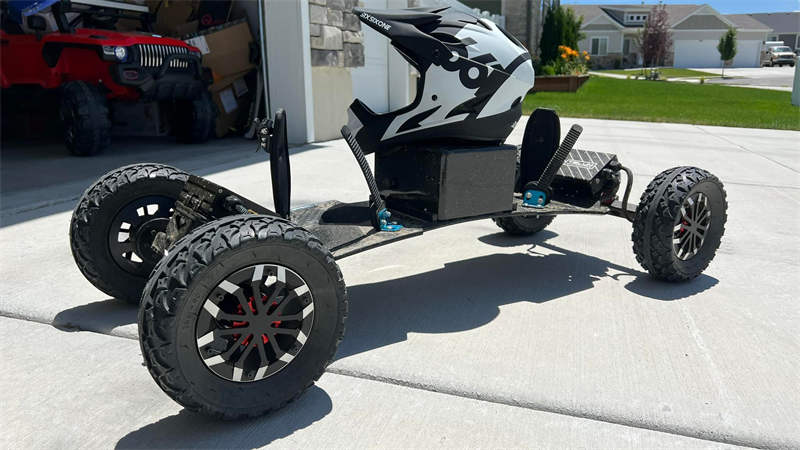
- Risk of Falls: Riding an electric skateboard involves balancing on a moving platform, which can increase the risk of falls, especially for inexperienced riders or those attempting advanced maneuvers. Wearing appropriate safety gear such as helmets, knee pads, elbow pads, and wrist guards can help reduce the risk of injury in the event of a fall.
- Speed and Control: Electric skateboards can reach high speeds, particularly on downhill slopes or with powerful motors. Maintaining control of the board, especially at higher speeds, requires skill and practice. Beginners should start at lower speeds and gradually increase as they become more comfortable and confident.
- Obstacles and Terrain: Uneven terrain, obstacles, and unexpected hazards such as potholes, gravel, or debris on the road can pose a risk to electric skateboard riders. Being attentive to your surroundings, choosing suitable riding routes, and anticipating potential obstacles can help mitigate these risks.
- Traffic and Pedestrians: When riding on roads or shared pathways, electric skateboard riders need to be aware of traffic laws, yield to pedestrians, and exercise caution when navigating intersections or crossing streets. Following traffic signals, using hand signals, and maintaining visibility with lights or reflective gear can enhance safety when riding in traffic.
- Mechanical Failures: Like any mechanical device, electric skateboards can experience malfunctions or failures, such as brake failure, motor issues, or electrical problems. Regular maintenance, including inspecting components, tightening hardware, and keeping the board clean and well-maintained, can help reduce the risk of mechanical failures.
- Weather Conditions: Adverse weather conditions such as rain, snow, or high winds can affect riding conditions and increase the risk of accidents. Avoid riding in inclement weather, as wet or slippery surfaces can reduce traction and control, leading to accidents.
Overall, electric skateboards can be safe when used responsibly and with proper safety precautions. It’s essential to familiarize yourself with local regulations, wear appropriate safety gear, practice good riding habits, and be mindful of your surroundings to minimize the risk of accidents or injuries while riding an electric skateboard.




